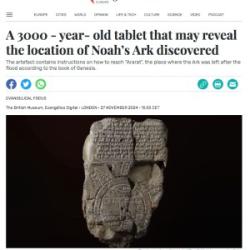[Leonard] Bacon and those who like him wanted both to preserve traditional biblical authority and to oppose slavery still had one more argument to advance. They could concede that the Bible never did in fact condemn slavery per se, but they could also contend that, when properly interpreted, Scripture did condemn the kind of slavery practiced in the American South. With a substantial history behind it, this was an argument of some subtlety, and one that Bacon himself, along with a sizable number of other earnest Bible believers, tried to make in the years before war broke out.
That’s from Mark Noll’s terrific book The Civil War as a Theological Crisis, and Noll goes on to offer five pages of examples of abolitionist white Christians making this argument. These anti-slavery arguments forcefully detailed the many ways that America’s practice of race-based, lifelong chattel slavery and the trading of humans as property differed greatly from the forms of slavery practiced in the ancient world, whether by the Hebrew patriarchs or by the pagans of the Roman Empire. Yes, they argued, the laws of Moses and the letters of Paul allowed and commended what is properly translated into English as “slavery,” but the practices those words described in those ancient contexts were nothing like the brutal form of the practice that bore the name here in America.
In an endnote to this section, Noll writes that:
From my viewpoint as a Christian believer at the start of the 21st Century, these antislavery arguments offered the most promising way of using the Bible during the interpretive battles of the mid-19th Century. But given the historical situations outlined in this book, it is also fairly easy to show why such arguments carried relatively little weight in the United States of that period.
It makes sense that Noll, a historian, finds the argument based on historical context most compelling. And he’s right that it’s a very strong argument, because it’s true. The “peculiar institution” of American slavery was more brutal, more oppressive, and more dehumanizing than the various forms of slavery practiced in the ancient world. The thing called slavery from which Fredrick Douglass escaped was a very different and much worse thing than the thing called slavery from which Onesimus escaped, and you don’t need to be a biblical scholar like Leonard Bacon or a historian like Noll to appreciate the difference.
Race-based, lifelong, American-style chattel slavery was a monstrosity. You can find some approximate parallels to such a system in the Bible, but they’re uniformly described as deserving — and receiving — extreme punishment.

But there’s also another reason that Noll finds this historical context argument “the most promising way to use the Bible.” It’s because he is himself a white American evangelical Christian. He is therefore, like Leonard Bacon, committed “to preserve traditional biblical authority” and to what he takes that phrase to mean. And as a white American evangelical Christian — even now in the 21st Century — what he understands that phrase to mean is precisely the same thing that white American evangelical Christians understood it to mean in the 19th Century when they recited the clobber-texts that, in their eyes, conclusively and authoritatively put the Bible and God on the side of the enslavers.
You can see this throughout The Civil War as a Theological Crisis in the multitude of examples Noll compiles of 19th-century white Christians arguing over whether the Bible was proslavery or antislavery. The proslavery side dominated those arguments, perceiving and portraying their anti-slavery opponents as having gone squishy on “traditional biblical authority.” Noll seems sympathetic to this claim. See, for example, his description of a debate between the abolitionist Jonathan Blanchard and the “gradual, voluntary emancipationist” (i.e., defender of the status quo) Nathaniel Rice:
Although this debate is worthy studying for many reasons, it is pertinent here for how Blanchard advanced the most popular form of the antislavery argument. As Rice methodically tied Blanchard in knots over how to interpret the proslavery implications of specific texts, Blanchard returned repeatedly to “the broad principle of common equity and common sense” that he found in Scripture, to “the general principles of the Bible” and “the whole scope of the Bible,” where to him it was obvious that “the principles of the Bible are justice and righteousness.” Early on in the debate, Blanchard’s exasperation with Rice’s attention to particular passages led him to utter a particularly revealing statement of his own reasoning: “Abolitionists take their stand upon the New Testament doctrine of the natural equity of man. The one-bloodism of human kind [from Acts 17:26]: — and upon those great principles of human rights, drawn from the New Testament, and announced in the American Declaration of Independence, declaring that all men have natural and inalienable rights to person, property and the pursuit of happiness.” Blanchard’s linkage between themes from Scripture and tropes from American republicanism was repeated regularly by abolitionists. But this use of the Bible almost never found support in the South and only rarely among Northern moderates and conservatives. In general, it was a use that suffered particular difficulties when, as in the ground rules laid down for Blanchard and Rice in their Cincinnati debate, disputants pledged themselves in good Protestant fashion to base what they said on the Bible as their only authoritative source.
Rice’s approach — the clobber-texting citation of specific texts excised from their context — is accepted as a theologically “conservative” commitment to “traditional biblical authority.” Blanchard’s reliance on “broad principles” and “the whole scope of the Bible” and his willingness to consider reasoned arguments from sources beyond the chapter-and-verse citation of clobber-texts was perceived as a deviation from that “conservative” appreciation for “traditional biblical authority.”
For the most part, Noll does not himself characterize Blanchard’s approach or that of other “Golden Rule” abolitionists as a “liberal” rejection of this supposedly “traditional” clobber-texting understanding of biblical authority. He hints at that a bit, but mostly just points out that such an approach was incapable of persuading those who cast themselves as more “conservative” and more devoutly dedicated to “biblical authority.” That’s accurate, as far as it goes, but it doesn’t go nearly far enough. Because clobber-texting concordance-ism costumed as sola scriptura really is not a “traditional” understanding of biblical authority. It is, rather, a creation of white slave-owning Christianity — an innovation that would be unrecognizable to any Christian prior to the 16th Century. It was far too recent a development to be called “traditional” and far too radical a departure from prior practice to be called “conservative.”
Given that white American evangelicals still, today, regard this clobber-texting concordance-ism developed to defend slavery as a more “conservative” form of “traditional biblical authority,” well, “it is also fairly easy to show” why arguments based on the historical context of the Bible carry “relatively little weight in the United States of this period.”
Which brings us to a fascinating, if somewhat frustrating, recent discussion of the strange evolution of a recent English translation intended to present the most “conservative” approach to “traditional biblical authority”: “When evangelical snowflakes censor the Bible: The English Standard Version goes PC.”
There’s a great deal to be said about this story and the ESV’s awkward attempts to employ concordance-ism as a means to fix the ugly pro-slavery implications that it was originally designed to produce. But before we get into all of that, we first needed to talk about Leonard Bacon and the other 19th-century abolitionists who — correctly — argued that American slavery was not identical or even analogous to the slavery of the ancient world described in the ancient texts of the Bible. That’s a bit of historical context that needed to be established before we could dive into the ESV translators’ attempts to deal with historical context by erasing it via what Samuel Perry calls “Bible modification.”












